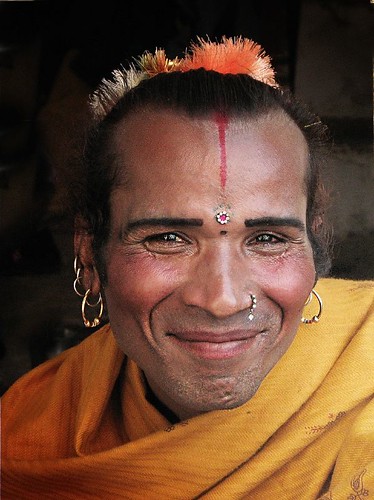
Badrinath, H.P.
Canon Powershot S3IS
The hijra of India
The Ancient Indian Kama Sutra refers to people of a "third sex" (triteeyaprakrti), who can be dressed either in men's or in women's clothes and perform fellatio on men. The term has been translated as "eunuchs" (as in Sir Richard Burton's translation of the book), but these persons have also been considered to be the equivalent of the modern hijra of India.
Hijra, a Hindi term traditionally translated into English as "eunuch", actually refers to what modern Westerners would call male-to-female transgender people and effeminate homosexuals (although some of them reportedly identify as belonging to a third sex). Some of them undergo ritual castration, but the majority do not. They usually dress in saris (traditional Indian garb worn by women) and wear heavy make-up. They typically live in the margins of society, face discrimination and earn their living in various ways, e.g., by coming uninvited at weddings, births, new shop openings and other major family events and singing until they are paid or given gifts to go away. The ceremony is supposed to bring good luck and fertility, while the curse of an unappeased hijra is feared by many.
Other sources of income for the hijra are begging and prostitution. The begging is accompanied by singing and dancing and the hijras usually get the money easily. Some Indian provincial officials have used the assistance of hijras to collect taxes in the same fashion; they knock on the doors of shopkeepers, while dancing and singing, and embarrass them into paying.
Recently, hijras have started to found organizations to improve their social condition and fight discrimination. There has even been a wave of hijra entering politics and being elected to high political positions. In the epic Mahabaratha of India, Arjuna, one of the 5 heroes who is originally a handsome man, warrior and great archer becomes Brihannala, a eunuch when they spend their last year of exile in the kingdom of Virata. Brihannala/Arjuna lived among the palace women as a teacher of song and dance.
_____________/|\_____________






2 comments:
nice self-introduction !!! & what beautiful pics !!!
Not bad article, but I really miss that you didn't express your opinion, but ok you just have different approach
Post a Comment